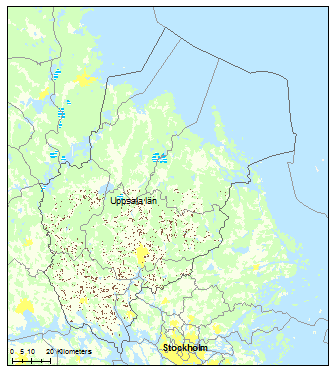Contact
Hans Liljenström, Prof. Dept. of Energy and Technology, SLU hans.liljenstrom@slu.se, +46 (0)18-671728, +46 (0)73-654 7977
The model covers all energy use and all greenhouse gas emitting activities and processes within the municipal borders of Uppsala (Figure 1 & 2)
In addition to this, long-distance travel by the inhabitants of Uppsala is included. For energy use, life cycle greenhouse gas emissions of fuels and electricity have been added to the direct emissions in Uppsala (see section 2.3.7). Regarding emissions that originate from energy consumption and long distance travel, consumption based accounting was done, allowing emissions caused by the inhabitants of the municipality, but occurring elsewhere, to be included in the model. A production-based approach was used for all other sectors (agriculture and forest land use, local transport, off-road machinery, industry and energy use in buildings) taking into account all emissions originating inside the municipal borders. Indirect emissions from production of goods and services that do not take place inside of the spatial boundaries are, however, not considered in the model.

Figure 1. Overview of inputs and outputs of the Uppsala LEAP model. The time step in the model is 1 yr.

Figure 2. Structure of the Uppsala LEAP model.

Climate impact of using locally produced willow to supply a biomass-fired CHP plant in Uppsala
Assessment of how variations within a county, in terms of soil quality and field location, influence the overall climate impact
Hans Liljenström, Prof. Dept. of Energy and Technology, SLU hans.liljenstrom@slu.se, +46 (0)18-671728, +46 (0)73-654 7977